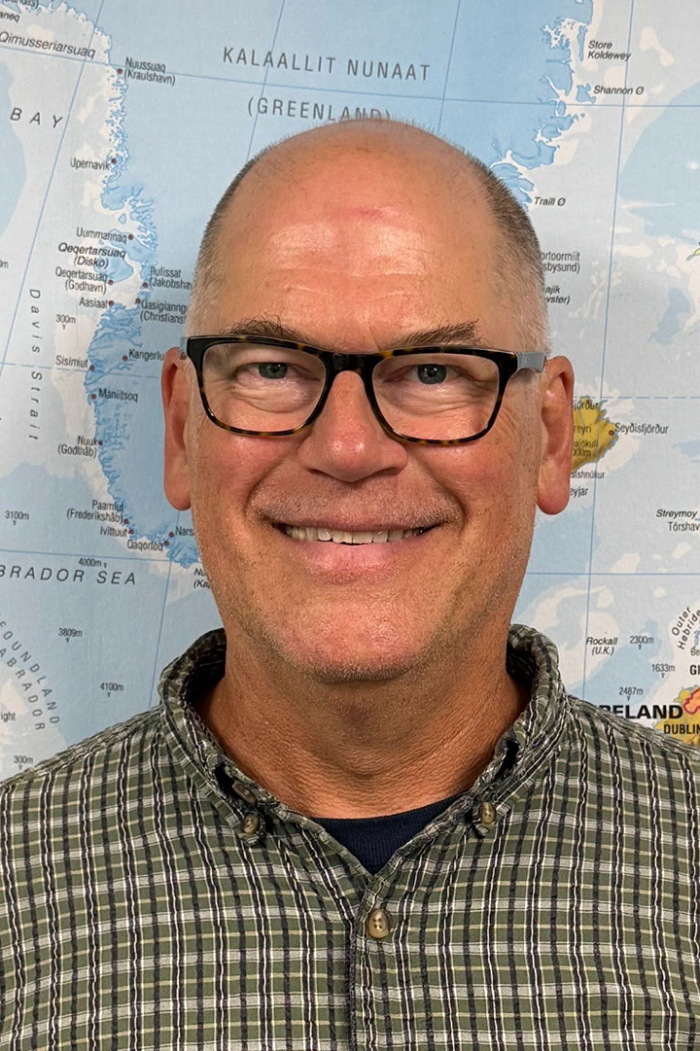David Rain

David Rain
Associate Professor Geography and International Affairs, Geography Department Chair
Global Equity and Social Justice
Contact:
Office Hours:
By appointment
David Rain is Associate Professor of Geography and International Affairs and the Department Chair. He holds an MS and PhD in Geography from Penn State University. He is a broadly trained human geographer with interests in urbanization, environment, geospatial science and technology, population and census geography, disaster vulnerability and resilience, and geographic and environmental education. His work has been funded by the Fulbright program and the National Institutes of Health. His current research is on using geospatial tools to address environmental issues in cities of the global south. Most of his field experience has been in West Africa. He teaches Geography of Africa, Society and Environment, Cities of the Developing World, and the Senior Seminar for Geography majors.
Urban Geography
Population Geography
Economic Development
Africa
GIS
Nature and Society
GEOG 1003 - Society & Environment
GEOG 2141 - Cities in the Developing World
GEOG 2133 - People, Land and Food
GEOG 3164 - Geography of Africa
ENVR 4195 - Environmental Studies Capstone
GEOG 6201- Geographic Thought & Methods
GEOG 6230 - Environmental Issues in Development
GEOG 6244 - International Urbanization
Weeks, J., Getis, A., Stow, D., Hill, A., Rain, D., Engstrom, R., Stoler, J., Lippitt, C., Jankowska, M., Lopez, A.C., Coulter, L, and Ofiesh, C., Connecting the Dots between Health, Poverty, and Place in Accra, Ghana Annals of the Association of American Geographers (2012).
Engstrom, Ryan, Eric Ashcroft, Henry Jewell, and David Rain. Proceedings, Join Urban Remote Sensing Event (JURSE). “Using Remotely Sensed Data to Map Variability in Health and Wealth Indicators in Accra, Ghana. Munich, Germany: JURSE.2009 (2011).
Rain, David, Engstrom, Ryan, Ludlow Christiana, and Antos, Sarah. Accra Ghana: A City Vulnerable to Flooding and Drought-Induced Migration, Chapter 4 in UN-Habitat, Global Report on Human Settlements: Cities and Climate Change, 2010/2011 (2011).
Weeks, John R., Allan Hill, Samuel Agyei-Mensah, Arthur Getis, and David Rain. The Annals of the Association of American Geographers. “Neighborhoods and Fertility: An AMOEBA-based Approach.” Vol 100, 3: 558-78 (2010).
Rain, David. Handbook on Geospatial Infrastructure in Support of Census Activities. Department of Economic and Social Affairs, Studies in Methods. ST/ESA/STAT/SER.F/103. New York: United Nations Publications (2009).
“Damascus: A Geographical Field Note.” The Geographical Review (2009).
“ Tales from the Data Mine: Mapping and Geographic Census Data Challenges in One African Country. ” Population, Space & Place (Forthcoming).
Tools and Methods for Estimating Populations at Risk from Natural Disasters and Complex Humanitarian Crises. National Research Council. Committee on the Effective Use of Data, Methodologies and Technologies to Estimate Subnational Populations At Risk, Board of Earth Science and Resources. Lead writer for Chapter Four: The Operational Environment and Institutional Impediments. 2007.
“Towards Settlement Science: A Research Agenda for Urban Geography.” GeoJournal 69, 1/2, special issue on global population distribution; David Rain and Budhu Bhaduri, co-editors (2007).
“Identifying Population Vulnerable to Hydrological Hazards in San Juan, Puerto Rico.” Derek Azar and David Rain, GeoJournal 69, 1/2, special issue on global population distribution; David Rain and Budhu Bhaduri, co-editors (2007).
“Population Density Versus Urban Population: Comparative GIS Studies in China, India, and the United States.” Population and Environment 28, 6: 321-37. Rain, David, Long, John F., and Michael Ratcliffe (2007).
“A World on Demand: Geography of the 24-Hour Global TV News.” Book chapter co-authored with Susan Brooker-Gross, Geography and Technology. Edited by Stanley Brunn, Susan Cutter, and J.W. Harrington (2004).
“Geo-Referenced Population Data for Humanitarian Response.” Proceedings, ESRI User Conference , Environmental Systems Research Institute, Redlands CA (2003).
Eaters of the Dry Season: Circular Labor Migration in the West African Sahel . Boulder, CO: Westview Press. August 1999. Paperback edition: December 2000.
“Commuting Directionality, A Functional Measure for Metropolitan and Nonmetropolitan Area Standards.” Urban Geography 20, 8. November-December 1999.
“The Women of Kano: Internalized Stress and the Conditions of Reproduction, Northern Nigeria” GeoJournal 43, 2: 175-189. October 1997.
Ph.D. (Penn State)

